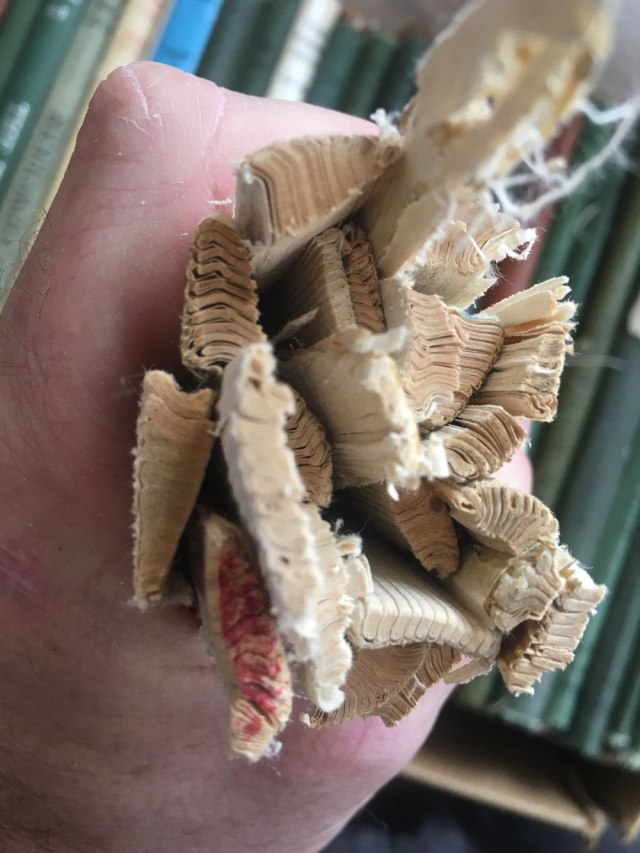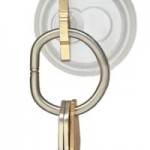New in Store: ‘The Woodworker Vol. IV, Shop & Furniture’ –
 I’m pleased to announce that the fourth and final volume of “The Woodworker: The Charles H. Hayward Years Vol. IV, The Shop & Furniture” is now at the printer and you can place an advance order for the book here. The 336-page book is $39 and will ship in February.
I’m pleased to announce that the fourth and final volume of “The Woodworker: The Charles H. Hayward Years Vol. IV, The Shop & Furniture” is now at the printer and you can place an advance order for the book here. The 336-page book is $39 and will ship in February.
This new volume covers three different topics:
1) The Workshop, including the design and construction of workbenches, tool chests and wall cabinets. There’s also an entire section devoted to “appliances,” which are workshop accessories such as shooting boards.
2) Furniture & its Details, includes a discussion of all the important Western furniture styles, including their construction, mouldings and metal hardware. This section also includes the construction drawings for many important and famous pieces of furniture examined by Charles H. Hayward during his tenure at The Woodworker magazine.
3) Odds & Sods. In addition to offering its readers practical information for the shop, The Woodworker also asked it subscribers to think about the craft and its place in modern society. We have included many of our favorite philosophical pieces in this final section.
You can download a nice excerpt here. The complete table of contents is here.
The History of the Project
The publication of this book marks the end of a journey that began even before John and I incorporated Lost Art Press. About 10 years ago, John and I began to investigate who owned the rights to material written by Charles H. Hayward during his time at The Woodworker.
After successfully obtaining the reprint rights to the material in The Woodworker, the next job was to obtain every copy of the magazine during the time Hayward was editor. All of these magazines had to be imported to the United States from the United Kingdom and Europe and were purchased from small bookshops and individuals.

Luckily, The Woodworker used to bind a year’s worth of editions into a hardbound annual. So we had to track down about 35 annuals instead of 420 monthly issues. Even so, it was an expensive and time-consuming endeavor because some of the annuals published during World War II were difficult to come by.
Then we had to read them all.
During a long series of evenings, Megan Fitzpatrick, Phil Hirz and I pored over every page of every issue and flagged all the articles we thought were worth reprinting. The topics of the articles overlapped a lot – there were dozens of articles on French polishing and poultry sheds, for example. So even after picking the best articles we culled them further to minimize the redundancy.
To make the articles easier to scan, we cut apart the bindings of all the books. First we used a knife. Then we switched to the band saw.

I can hear some of you howling about us destroying these books. But keep in mind that all these books are pretty much doomed because they were printed on acidic paper that is already falling apart. Yes, there are non-destructive methods to scan material (we use them all the time). But in this case, the band saw was the best way to go.
Enter Ty Black, a woodworker and computer nerd who scanned all of the pages and wrote a special program for processing the images that adjusted each image so it was crisp and clear. Though I wrote about the whole process in one paragraph, it took a year.
We reset all the text from scratch. So it had to be compared to the original paper files to make sure it was correct. It took John months of work to do this and enter all the text into InDesign files.
During the last two years, Linda Watts and Meghan B. designed the pages for the books and tried to retain the vintage feel of the magazine in the layouts. And Megan Fitzpatrick, Kara Gebhart Uhl and I gave a final edit to all the text to clean it all up.
It was as grueling as our Roubo project, but grueling in different ways. Roubo’s text makes my brain hurt after a large dose of it. With this project, it was dealing with the thousands of images and complexity of the layouts that made me wonder when happy hour would start (is 11 a.m. too early?).
We hope you like the result.
Like all Lost Art Press books, “The Woodworker: The Charles Hayward Years” is produced and printed entirely in the United States. At 336 pages, it is printed on smooth acid-free #60 paper and joined with a tough binding that is sewn, affixed with fiber tape and then glued. The pages are covered in dense hardbound covers that are wrapped with cotton cloth.
I am personally thrilled to close the book on this book and have one less gargantuan quest on my to-do list.
— Christopher Schwarz






